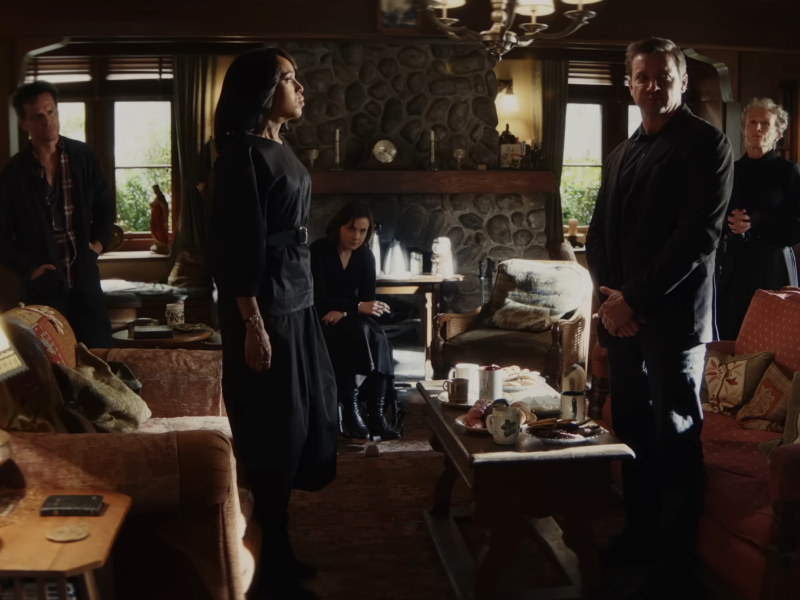If you don’t want any spoilers up to and through season three of The Good Place, then you better not read this forking article.
When it first aired, The Good Place was a zany comedy about heaven, where somehow human troubles continue in paradise, especially when you end up there in someone else’s place. Eleanor (Kristen Bell) doesn’t earn a spot in the Good Place, which makes the levity brought by the bright, happy environment all the more hilarious.
At the conclusion of the first season, we learn that the neighborhood Eleanor has spent her afterlife in is actually the Bad Place, and that aside from three of her companions and Janet the supercomputer, everyone she’s met there is a demon. Michael (Ted Danson) is actually an architect who designed and pitched a new kind of torture for a small group of the damned, convincing them they’ve made it to heaven and making their paradise less than perfect.
[Read more: ‘American Horror Story’ should quit while it’s ahead]
The second season saw Michael trying over and over again to make the Bad Place design work, but ultimately, he fails. To avoid his own punishment from his superiors, he has no choice but to team up with Eleanor and the others and finds himself growing fond of them.
With the third season, Eleanor and the others are brought back to life and given a second chance to prove they can improve their lives and earn a spot in the Good Place. Michael and Janet can guide the group toward each other and teach them to live moral lives.
Initially, this premise worked. Even though most of the nature of the show was abandoned in favor of trying to show moral improvement, the characters were still themselves and the general structure of the stories remained consistent.
Eventually, however, Michael is forced to reveal to the group that they have been to the Bad Place, he saved them, and now that they know, they apparently have no choice but to return to the Bad Place for eternal punishment when they die.
This revelation felt more like a season finale than a mid-season plot point. The show sought to adapt its plot to a new pseudo-concept after already shirking its main premise once before. Now, the group of the damned would instead use their knowledge of the afterlife to save others souls and use the time to improve their life on earth by fixing or creating bonds that hadn’t existed before.
[Read more: Review: Robin Wright can’t hold the walls of ‘House of Cards’ together]
Minor characters from flashbacks — such as Eleanor’s mom, Tahani’s (Jameela Jamil) sister and Jason’s (Manny Jacinto) dad — have now earned entire episodes of focus. The self-proclaimed “soul squad” feels like an interesting new concept for the show, but it also gives the appearance that the initial premise of the show was collapsing under its own weight and couldn’t be maintained for much longer.
The seventh episode, titled “The Worst Possible Use of Free Will,” was the best all season. It features Eleanor reliving her memories in a humorous way, with most scenes showing just her and Michael together. The best part of the episode is that it feels like earlier episodes before the protagonists had returned to Earth.
The performances by the actors still feel honest and true to the characters. The writing of particular scenes is still hilarious, despite plots of episodes falling flat. Almost all of the elements that made the show lovable in the first place are still there. The only thing missing is the setting that gives the show its plot. And its title. And a reason to watch it.




